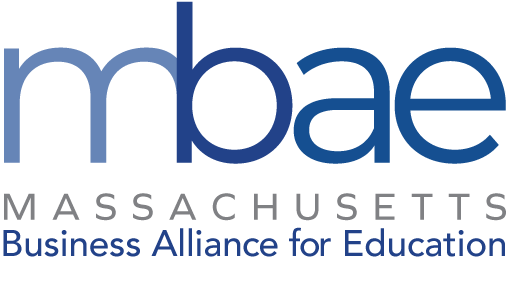Massachusetts’ economic vitality and leadership in innovation depend on the state staying ahead of the national curve in education. The business community must do all we can to keep our foot on the pedal of progress. Over the past two decades, we have learned a lot about what all students need to excel.
Unfortunately those opportunities have not been consistently experienced in all of our schools. It’s our obligation to ensure that all children in Massachusetts – no matter who they are or where they live— have access to the innovative learning models that will prepare them for life.
That’s why MBAE is pleased to be part of a new group of mayors, educators, advocates, and business leaders that is working to incentivize and empower communities to provide more students with the kind of teaching and learning that will prepare them to succeed. We are calling for targeted investments in high-quality early childhood education, expanded learning time, and efforts to redesign schools to creatively deploy teacher talent, technology, and public resources.
Our proposal creates a competitive and accountable fund for communities committed to producing tangible results for kids. This approach is the right next step for Massachusetts because it is tightly focused on shared priorities, it is competitive, completely voluntary, targeted to communities with the greatest need, and fiscally responsible. While new leaders on Beacon Hill chart a course forward, this is an immediate step they can take to empower communities and establish a stronger foundation for our kids and their futures.
We hear it all the time – “Massachusetts is consistently the highest performing state on most national measures and ranks among the top performers on international comparisons as well.” But our progress has slowed, and despite the innovation generated by our thriving high technology and world-class university sectors, we are doing little to encourage similar innovation by PreK-12 educators in the use of time and space, mastery based progression and other approaches to student centered learning. Meanwhile, utilization of technology in education is literally decades behind almost every other sector. See our New Opportunity to Lead agenda for more information!
The Building on What Works coalition proposal can jumpstart the creation of demonstrations that can scale rapidly and successfully, providing the opportunity for multiple school models (charter, district, innovation, pilot, etc.) across district lines to come together and collectively support each other’s efforts to improve educational opportunities for students.
Investment in the future can’t stop because fiscal times are tough. Education is an essential solution to the problems we face. With a modest investment we can keep the momentum going, build a more sustainable workforce pipeline, and invest in our children and our communities.

